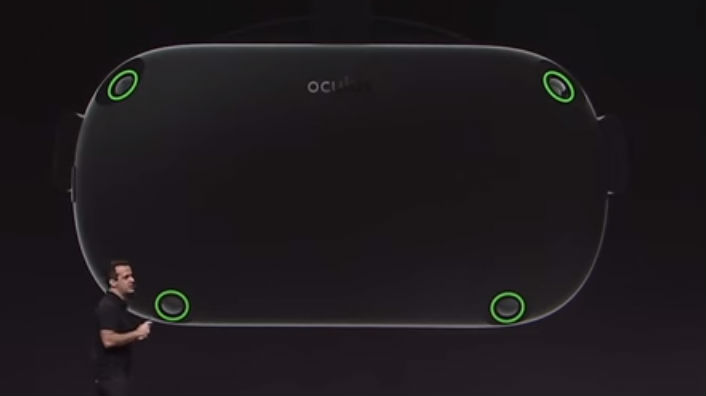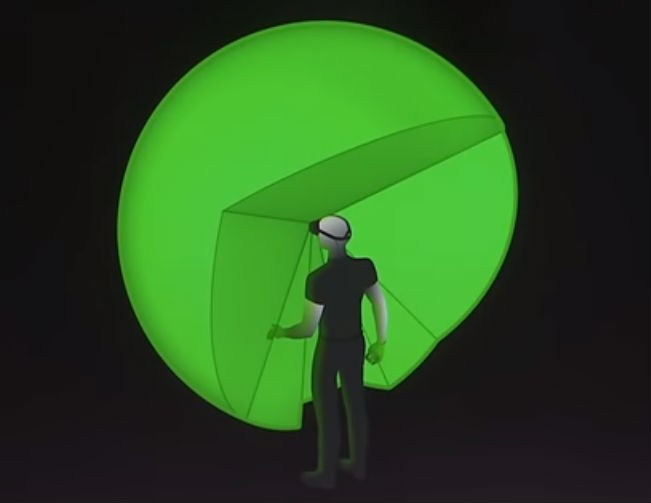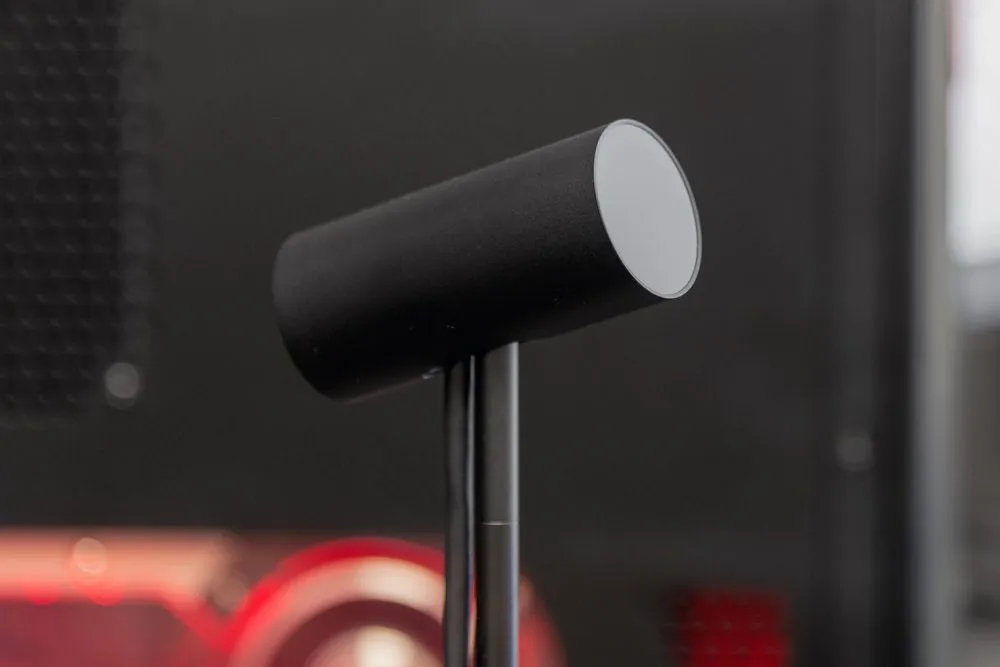The push of VR toward mainstream adoption is at an interesting moment.
On the one hand, we have more VR headsets on the market than ever before powered by technology from Microsoft, Facebook, Sony and Google, with manufacturers including Samsung, Acer, Lenovo, Dell and HP all trying to cut off a piece of what is still a small market.
On the other hand, it was a tough year for many of the VR developers out there who found themselves struggling with low adoption numbers. One of the early social VR apps, AltspaceVR, ran out of money and its remaining team got swiped up by Microsoft. Meanwhile, one of VR’s earliest and biggest proponents, CCP Games, halted all its VR work. Those are just two of the highest-profile situations. There are many more examples of developers struggling in 2017.
The combination is almost enough for naysayers to trot out their overused comparisons to 3D TV and try to claim a premature “VR is dead on arrival.”
The truth is that the biggest issue facing VR adoption continues to be cost. The all-in price for any quality VR headset and the computer which draws the virtual world you visit is still significantly more than $500. Plus, almost all VR headsets on the market in the United States today require multiple pieces to work. It is expensive, and a pain, to get into a VR experience with a friend. Still, major manufacturers did their best this year to lower the barriers and widen the appeal of VR hardware. Here’s a quick summary of what happened in 2017:
- Facebook’s Oculus Rift drops from $600 to $400, with Black Friday deals bringing it down to $350.
- Microsoft licenses HoloLens tracking technology to PC manufacturers allowing them to build compelling VR headsets that are easier to use starting at $400, with Black Friday deals bringing the entry level down to $300. Microsoft also embraces Steam.
- HTC releases Vive Trackers that can increase a sense of presence.
- Sony bundles the camera with PlayStation VR headsets for $400 and streamlines its hardware a bit.
- Google significantly upgrades its Daydream View for greater comfort and longer-term use and rolls out a huge feature allowing wireless streaming to Chromecast.
While these efforts are all steps forward in driving greater adoption of VR, I would point to the efforts of Facebook and Microsoft as having the biggest impact in widening the pipeline so developers have more people to which they can sell VR software. I would also point to these two companies as being best positioned to drive adoption even wider in 2018.
Next year, we know Facebook is planning Oculus Go to offer an entry level all-in VR price of just $200, combined with instant-on functionality that will make it easy to jump into VR and find a friend at any moment. And we also know Microsoft is at least considering adding VR features to its Xbox One consoles.
But what of the Oculus Rift?
The device which arguably kickstarted VR’s renaissance has been on the market as a complete package with hand controllers for less than a year at this point, so it might be premature to discuss potential hardware upgrades. But the reality is that Facebook isn’t just competing against the likes of Microsoft and Google, it is also competing against the clock. Each passing month without a robust install base of VR headset owners makes it hard for inspired VR developers to make rent and feed their families, turning away talent that could help jumpstart a new medium. Meanwhile, each passing month costs Facebook a lot of money.
An update to Rift’s hardware — while still being aggressive with pricing — could multiply the VR install base.
Is Oculus Rift Ready For A Tracking Update?

We know Facebook is planning to release standalone kits to developers in less than a year featuring more convenient tracking technology. The updated “Santa Cruz” prototype headset, which I tried with redesigned hand controllers at Oculus Connect 4, dials up the freedom you can experience in a VR headset while bringing the same ease of use people will enjoy early next year with Oculus Go. It is unlikely, however, we’ll see consumer standalones from Oculus with the same kind of freedom you can experience in an Oculus Rift until 2019 at the earliest. That’s because Facebook’s public timeline only points to the release of developer kits in 2018 for a standalone full freedom of movement VR headset.
This leaves at least a year-long gap where headsets powered by Microsoft’s tracking technology could try undercutting Rift on price while also offering easier set up. That is, unless Oculus releases a new Rift with updated hand controllers and the tracking tech I saw on Santa Cruz.
At OC4 I talked to Nate Mitchell, Oculus co-founder and head of Rift. I expressed to him how frustrating it is to set aside three USB ports on your PC and run cords around your house to three cameras in order to enjoy a fair amount of freedom in an Oculus Rift. I asked him if those things would improve eventually.
“We have more in store for Rift in hardware and software,” Mitchell said. “We know Rift pain points better than anyone. I live Rift’s pain points every single day. I love Rift, I do think it is hands-down the best VR product that’s available at the absolute best price. Can we do better? Absolutely. Are we going to do better? Absolutely.”
My personal experience with Santa Cruz was joyous. Its tracking system did a remarkable job — using four cameras on the headset — to track my hand movement even in weird positions somewhat behind my body. In comparison, headsets powered by Microsoft’s technology only feature two wide angle forward-facing cameras that can miss some of these areas. The Microsoft system does a good job of capturing some movements when your hands aren’t in view, but the four sensor design employed by Oculus seems to offer a much larger tracked volume.
For those unfamiliar, both Santa Cruz and VR headsets based on the tracking technology Microsoft pioneered with its expensive HoloLens AR system use something called “inside-out” tracking. This means the headsets essentially track themselves as they move through space, without any external hardware needed. Current headsets like Rift and Vive require the installation of cameras or spinning lasers around the outside of your room to track a headset and controllers.
“With three external sensors with Rift when you have a full almost room-scale experience, the level of tracking that you’ll get in some of those edge cases is gonna be better [than inside-out tracking],” Mitchell said. “The beauty of Santa Cruz and the beauty of the inside-out tracking solution is that it’s actually pretty rare that you fall into those spots.”
The below photo from an Oculus presentation shows the range of controller tracking possible with the four sensor inside-out approach seen on Santa Cruz.

VR headsets are of course also held back by the limited resolution of their displays, but as PSVR’s adoption has shown, a lower resolution is still acceptable to many buyers. Enthusiasts get a little hung up on a resolution upgrade being a prerequisite to a “Rift 2.0”. I’d argue that cost and the superior ease of use that would come with a headset-based tracking solution is what’s holding back Rift adoption more than the number of pixels on the display. VR headsets need to come in at lower prices and offer easier setup in order to unlock a greater install base, and that’s what Facebook could do with an updated Rift that employs the tracking technology I saw in Santa Cruz.
Such a Rift update would still have a wire and it would still use a PC to power it, but it would be as easy to set up as any of the Microsoft headsets while offering tracking quality in the same ballpark as what you have with a Rift today. If Facebook stayed aggressive with pricing, it might even be able to lower cost a little bit more in this process by eliminating the external cameras.
This is all, of course, mostly conjecture. I don’t have any confirmation of Facebook’s plans beyond indications from Mitchell that he’s aware of what a pain it is to set up cameras around a room and that they have hardware updates planned for Rift in the future.
“Tracking is a fundamental part of a great VR experience especially when you go six degrees of freedom headset, six degrees of freedom controller,” Mitchell said. “You never want your mouse to freeze or disappear or float away…We’re not by any means saying we’ve perfected tracking across the industry or anything like that but we believe it’s a fundamental ingredient and an area where you can’t shortchange the experience.”






























